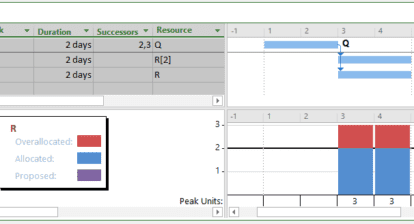Integrating Microsoft Project with Microsoft Outlook in 2023
Microsoft Outlook remains the email workhorse, but email is only one of the ways that Outlook and the latest version of Microsoft Project work together. When you’re in Project, you can email Project files without jumping over to Outlook. But because both programs can store lists of tasks and names, you can also export Project tasks to Outlook and vice versa. You can even use your Outlook address book to build your resource list in Project. This article explains how to use these features in 2023.
Adding Project Tasks to Outlook
If the old saying “Out of sight, out of mind” is still true, you can keep important Project tasks in sight by adding them (one at a time) to your Outlook Task List. By adding a reminder to these Outlook tasks, you can stay on top of things. All you need to do is copy and paste. But before you get too attached to this approach, you should know that when you add Project tasks to Outlook, you have copies of those tasks in two places — and they aren’t linked. So if you mark a task as done in Outlook, it isn’t automatically updated in Project and vice versa.If you decide to add tasks to Outlook as reminders, the steps are:
- In a task-oriented view like Gantt Chart, select the Task Name cell for the task you want to copy to Outlook and press Ctrl+C. (Or right-click the cell and choose Copy Cell.)
- In Outlook, display the Tasks list by clicking Tasks at the bottom of the Outlook window.
- Right-click an empty area of the Tasks list and choose New Task. The task-entry window appears with the heading “Untitled – Task.”
- Click the Subject box and press Ctrl+V. The task name appears. If you want Outlook to remind you about the due date, turn on the Reminder checkbox and choose the date and time.
- Click Save & Close.
Repeat for other tasks you want to add to Outlook.
Learn How to Use Microsoft Project Today
Learn Microsoft Project
Importing Tasks from Outlook
You may create tasks in Outlook that belong in a project. You can import these tasks into a Project file as a head start. The imported tasks come in with the names and any notes from Outlook. They have a standard duration of “1 day?” (estimated) with no dependencies, resources or dates.To import Outlook tasks:
- Open the Project file, display a task-oriented view, and in the Task tab’s Insert section, click Task | Import Outlook Tasks. The Import Outlook Tasks dialog box opens. Outlook doesn’t have to be running, but you must have at least one incomplete task in your Outlook Task list.
- Turn on the checkbox for each task to import. Any notes from Outlook appear in the Notes cell. Click Select All to choose all tasks or Clear All to start over. Don’t select folders and categories.
- Click OK. The tasks appear at the end of the Project task list.
Building a Resource List from an Outlook Address Book
If you use Outlook, you likely have team member information in your Outlook address book or Contacts. Rather than retyping this in Project, you can import resource names from Outlook. Here’s how:
- In Project, open the file and display the Resource Sheet view.
- In the Resource tab’s Insert section, click Add Resources | Address Book. The Select Resources dialog box appears.
- Select the names to add to your project or resource pool by Shift-clicking or Ctrl-clicking.
- Click Add. The names appear in the Add box.
- Click OK. Project adds new rows in the Resource Sheet.
Sending Project Information to Others
Attaching a Project file to email is common. With Project, you can send the whole project or selected tasks and resources. If recipients lack Project, you can create a picture to email instead. Project sends files using any MAPI-compliant email program.When you need schedule approval, Outlook’s routing mechanism can send the file to reviewers in sequence for comments and approvals. While attachments clutter email servers, publishing a Project file to Microsoft 365 tools like SharePoint or OneDrive allows everyone to view a single copy.To send a Project file from within Project:
- Open the file and choose File | Share. On Backstage view’s Share page, click Email and then “Send as Attachment.”
- Your email program opens with the Project file attached and the filename in the Subject line.
- Click the “To:” box and choose recipients in the Select Names dialog box. You can also type email addresses.
- Edit the Subject to explain why you’re sending the file. In the message, tell recipients what you want them to do with the attached Project file.
- Click Send. Recipients get your email with the Project file attached.
The message form is the same as your email program, so you can modify and format it as usual.








Ann McPhillips
Thanks for the detailed overview of this feature and how to apply it. Nice to see more helpful features in MS Project 2013 to support continual communication improvement while also helping the PM uphold strong time management! Loving all of the added features of this new version – in addition to what the 365 platform offers!